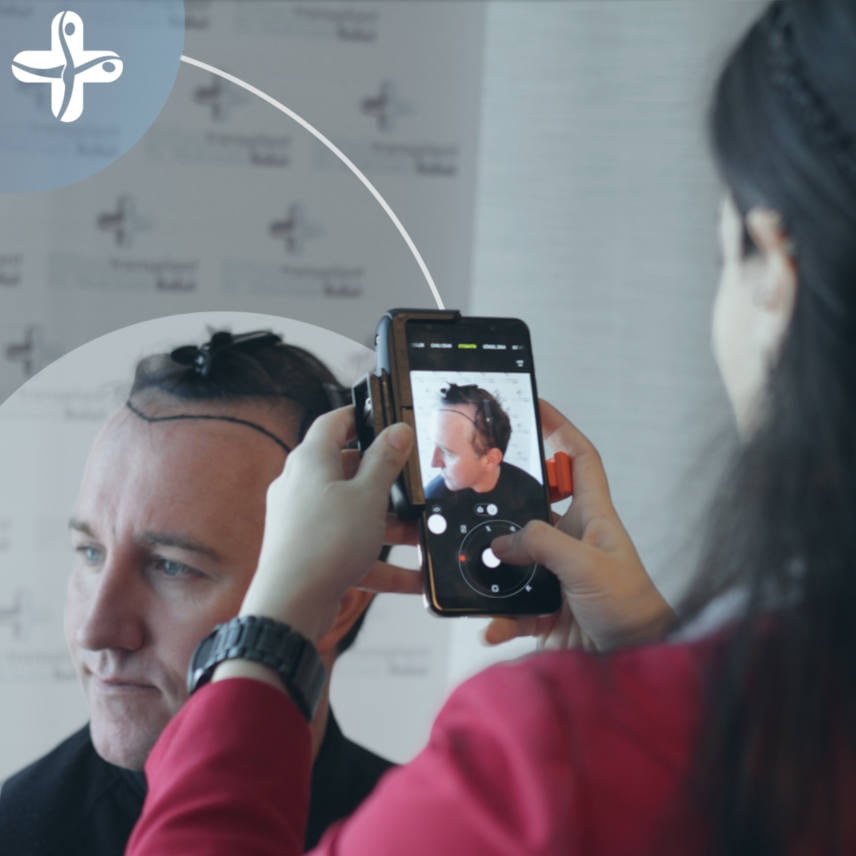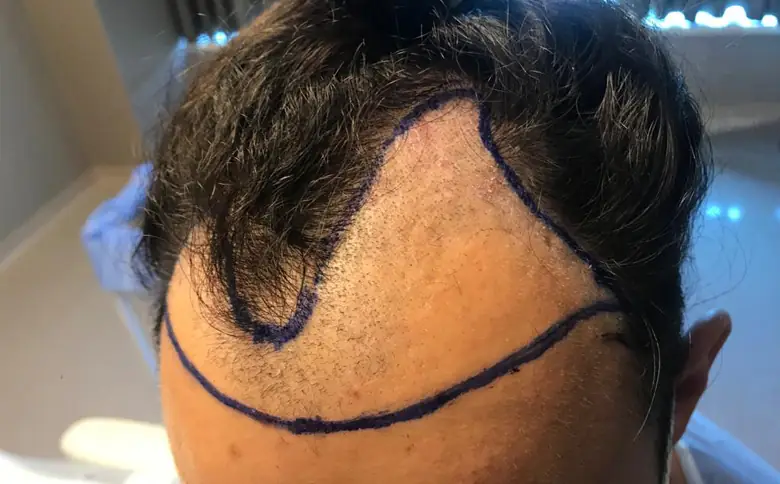
What Should I Do Before and After a Hair Transplant?
A hair transplant is a surgical technique aimed at treating baldness in men and women. In this procedure, hair follicles are transferred from one part of the body (donor site) to the other part which is balding (recipient site). Hair surgery is on the rise, and with advancements in procedures, it can reverse hair loss to an extent where you’ll not remember that you were bald. But what should you do before and after a hair transplant? We will discuss it in detail in this article.
Summary
- Why Should You Get a Hair Transplant?
- The Things to Consider Before Getting a Hair Transplant
- What Should I Do Before a Hair Transplant?
- What Should I Do After a Hair Transplant?
- What to Expect After a Hair Restoration?
- Conclusion
Why Should You Get a Hair Transplant?
Hair loss is not uncommon. Almost 60% of men and 50% of women are affected by some type of hair loss in their lifetime. There are many baldness treatment options available according to the type of hair loss.
A hair transplant is a method used in common types of hair loss, including pattern baldness in males and females. The most important one is that it is effective, with a success rate of 95 to 98 percent.
A hair surgery provides a permanent solution to hair loss, but deciding to go for it is a big decision due to the number of reasons. You must take your time before deciding to go for transplantation as this is a life changing procedure.
The Things to Consider Before Getting a Hair Transplant

Doing proper, thorough research before opting for hair transplantation is necessary to know what to do before and after a hair transplant.
You must discuss in detail with your hair transplant surgeon all the concerns you have about the surgery. A few things which you must keep in mind before a hair transplant are:
Choosing the right hair surgeon and technique
The experience and expertise of the surgeon are vital for the successful outcomes of hair transplants. You must research the surgeon’s experience and his or her rates of success.
It is a good idea first to have an initial consultation with the surgeon to get a satisfactory answer all your concerns and to discuss the cost, type, and recovery of the procedure.
There are two main types of hair surgery procedures. Making the right choice will have consequences before and after a hair transplant.
Follicular unit extraction (FUE)
It is a very precise procedure involving the extraction of hair follicles one by one from the donor site and transferring them to the recipient site. This is used as part of all of our procedures to remove the hair follicles before implantation.
Direct hair implantation (DHI)
Thanks to the innovative CHOI implanter pen, follicles are inserted individually into the recipient area without needing to open a separate canal. The DHI method allows for a high growth rate with maximum hair density.
Sapphire
By using fine sapphire blades, the hair grafts can be transplanted with a high degree of precision. A V-shaped channel is created providing a natural direction of growth meaning it is very effective for those suffering from hereditary hair loss and receding hairlines.
Percutaneous
Most suited to those who have a thinner hair structure. Pointed steel blades provide a natural end result where the specialist is able to determine the direction of growth of the grafts.
Realistic Expectations before and after a hair transplant
Although hair transplantation is an effective treatment option for baldness, every individual responds differently.
It takes time from few months to a year to see the results, so be patient and prepare your mind that your results may vary from other individuals.
What Should I Do Before a Hair Transplant?
One week before your hair surgery, you must stop any of these medications (increases the risk of bleeding during the procedure) if you are taking them:
- Anti-inflammatory medications.
- Aspirin.
- Vitamin B or E.
- Blood thinners.
- Herbal medicines.
It is recommended that if you are taking any other medications, you must tell your surgeon about them. It is also recommended not to smoke and drink alcohol at least one week before the procedure.
These can be a reason for poor healing due to decreasing blood flow to the scalp.
How to prepare for the morning of your procedure
You must prepare yourself before leaving for the procedure. Shower and thoroughly wash your hair. Do not apply any styling products, gel, or sprays.
Put on comfortable clothes, preferably a button-down shirt to take on and off easily. Drink a lot of water to stay calm and relaxed.
The whole procedure takes almost a full day, and due to sedative medication, you’ll have someone on hand to ensure you get back to your hotel safely afterwards.
What Should I Do After a Hair Transplant?

Once the procedure is complete, recovery varies between individuals and can take from two days up to two weeks. The surgeon will put a bandage on the donor site and a headband around your forehead.
- You have to sleep with your head elevated from the night of procedure and for the next five nights on two pillows to keep your head at a 45 degree angle.
- You may feel swelling, itching, and pain for a few days, and the surgeon prescribes medications for these symptoms.
- The next day the surgeon will remove the bandage and will instruct you regarding all the post-op care.
- On the second or third day, you can wash your hair as per the demonstration by the surgeon.
- Alcohol must be avoided for three days after surgery and smoking for at least two weeks post-surgery.
- You must cover your head for three months if you are out in strong sunlight for more than 30 minutes.
- Limited physical activity is allowed in the first week, but strenuous exercise must be avoided for two weeks after hair surgery.
- Mostly the patients are able to resume their routine activities just 2 to 3 days after your hair transplantation.
How can I wash my hair after a hair transplant surgery?
Washing helps the scabs to fall off and speeds up the healing process. Therefore, it is recommended to wash the hair on the second day. The shampoo and lotion will be provided by your medical team and must be used every day until the scabs fall off.
The hair must be washed every day then for one month. The lotion provided is applied to the donor area for the whole of the first week. In the second week, a lotion is applied to the donor and transplanted areas.
Lotion application
To apply the lotion, tap the product gently and leave it for one hour before rinsing. After this, you can use the provided medicated shampoo by creating a foam and spreading it through the donor and recipient areas gently.
Let it sit for 2 to 3 minutes followed by a rinse with lukewarm water. Do not use a towel, instead allow to air dry. This is unquestionably the most important step before and after a hair transplant as heat styling tools can damage the hair follicles.
Removing crust after hair transplant
What to Expect After a Hair Restoration?
-
Week 1
- In the first week, patients experience most of the symptoms, including numbness, soreness, and tightness of the scalp. There may be a little bit of bleeding from the donor area. Scabs form around the graft and usually fall off on the seventh day.
-
Week 2-3
- Healing is complete after the scabs have fallen off. Patients can have itchiness and pain in the donor area.
-
1-2 Months
- The transplanted hair falls off, and no new hair growth can be seen as the follicles are in the resting phase, which will end soon. You may be wondering when can I comb after a hair transplant? At this point you can gently comb the hair but the follicles may still be sensitive so it is advised to be cautious still.
-
2-3 Months
- Redness gradually fades, and fine hair can be seen growing.
-
4-6 Months
- There is a noticeable improvement in hair density, coverage, thickness, length, and appearance in hairline shape.
-
7-10 Months
- The results are seen, and 70 to 90% of hair growth can be seen.
-
12 months
- The transplanted hair finally grows back naturally.
Conclusion
We have discussed everything you need to know about before and after a hair transplant. It's one of the safest and most effective hair restoration methods for those who want permanent results.
Although every individual responds differently to the procedure, still it has higher success rates for hair regrowth in comparison to other methods. However, it is recommended to discuss everything with your surgeon before the surgery.
Are you interested in an affordable hair transplant in Turkey? At Elithair we offer a free and professional hair loss diagnosis. It couldn't be easier using our graft calculator below and we'll send you the results in no time!
FAQ
What factors should I consider when choosing a clinic for a hair transplant?
Consider the clinic’s reputation, experience, and qualifications of the surgeon, patient reviews, and the technologies and techniques they use.
Can I undergo a hair transplant if I have a medical condition?
It depends on the medical condition. You should consult with your doctor and hair transplant surgeon to determine if you are a suitable candidate. At Elithair we carry our own analysis, thanks to our Pre Test System, to make sure that all our patients are suited for this type of surgery.
What lifestyle changes should I make before and after the procedure?
Before the procedure, avoid smoking, alcohol, and certain medications. After the procedure, maintain a healthy diet, avoid strenuous activities, and follow the aftercare instructions provided by your surgeon.
How does hair texture affect the transplant process?
Hair texture can influence the technique used and the approach to implantation to ensure natural-looking results.
Are there any age restrictions for undergoing a hair transplant?
While there is no strict age limit, it is generally recommended for adults who have stable hair loss patterns. Younger individuals may need to wait until their hair loss pattern stabilizes.


